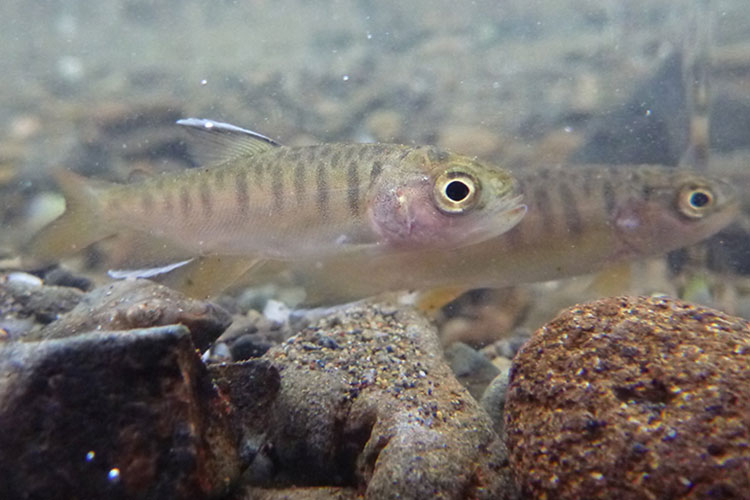
A seven-year project tracking young coho salmon in the Russian River watershed found that some habitats support the young fish even in the midst of extended drought. (California Sea Grant photo)
For young coho salmon, summer is not all fun in the sun: Extended heat and drought can sometimes dry up the small freshwater streams where the endangered fish spend the first year of their lives, leaving them trapped in small pools with limited food and oxygen.
As climate change threatens to bring hotter and drier summers to California, a new study by researchers at UC Berkeley and the California Sea Grant provides conservationists and resource managers with valuable insights on how to continue to protect and restore California's dwindling coho salmon population.
The research team tracked nearly 20,000 tagged fish in the Russian River watershed over a seven-year period from 2011 to 2017, spanning a time of major drought in California. This watershed is home to a highly endangered population of coho salmon, which nearly collapsed in the early 2000's, but has been recovering since then through a conservation hatchery program and other efforts.
"We were able to measure survival during this historic drought, which will help us understand how future droughts will impact this population of salmon," says University of Wisconsin-La Crosse Assistant Professor Ross Vander Vorste, who conducted the analysis for the study as a UC Berkeley postdoctoral researcher in collaboration with California Sea Grant's Russian River Salmon and Steelhead Monitoring Program.
The researchers discovered that the salmon survival depends in part on how long isolated pools spend disconnected from flowing water: the longer the dry period, the fewer salmon were able to hang on until the wetter months of fall and winter. And though fewer salmon overall survived the drought years, the researchers did find reason for hope. In certain streams and pools, which the researchers call drought "refuges," salmon survival was similar in both drought and non-drought years.
"A subset of the streams and pools were remarkably resilient to drought," said Theodore Grantham, a cooperative extension specialist and adjunct professor of environmental science, policy and management at UC Berkeley. "In other words, in a handful of pools we saw very similar levels of survival in drought and not non-drought years. We weren't able to pin down why certain pools and certain streams served as drought refuges, but it points to a compelling area of future research."
The research suggests that maintaining stream connectivity during the summer months -- by limiting water withdrawal for human use, for instance -- could go a long way toward protecting this vulnerable species.
"The work highlights the importance of these intermittent streams generally in supporting this sensitive species population," Grantham said. "These types of streams are often poorly protected by regulations because they don't flow for the whole year, but our work shows the importance of managing these streams as valuable ecological resources."






